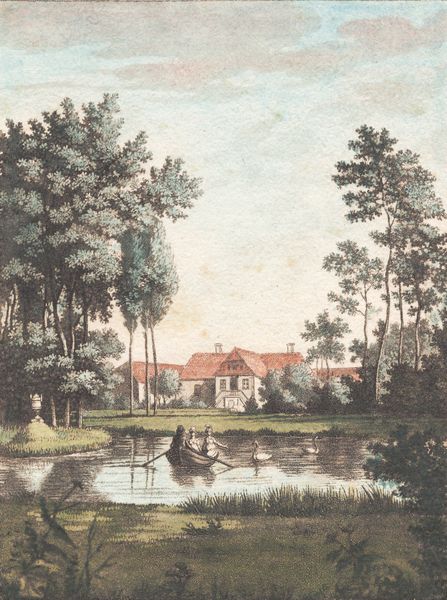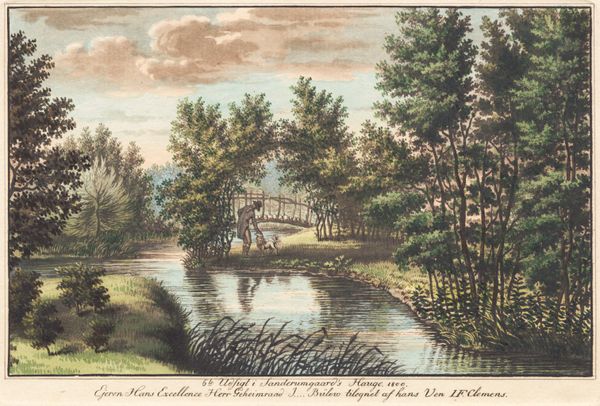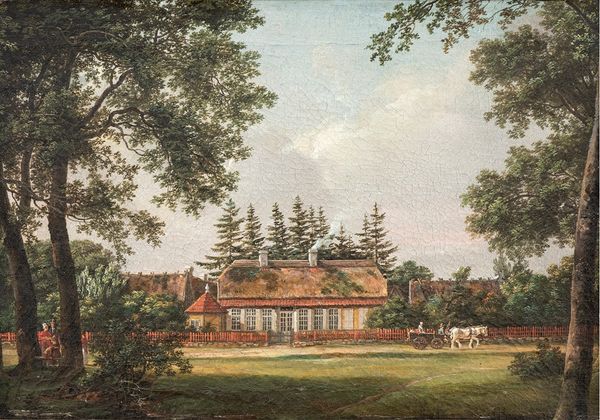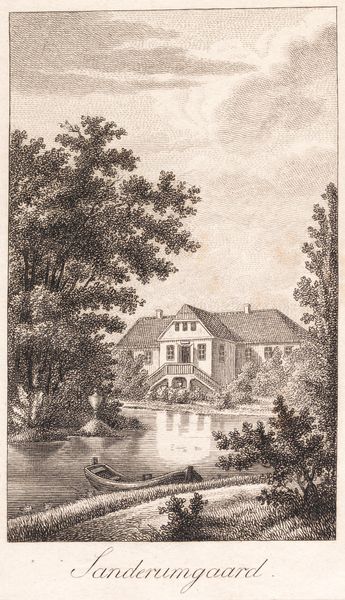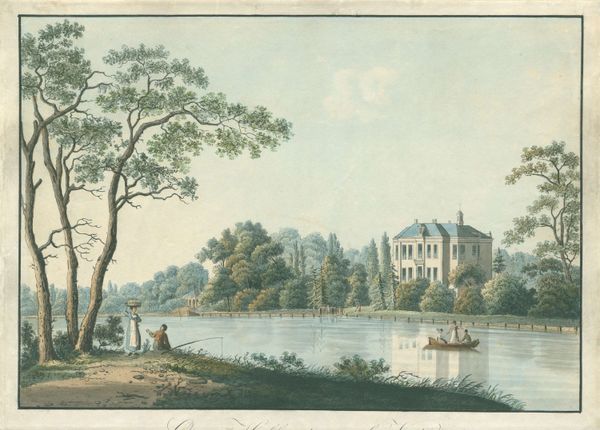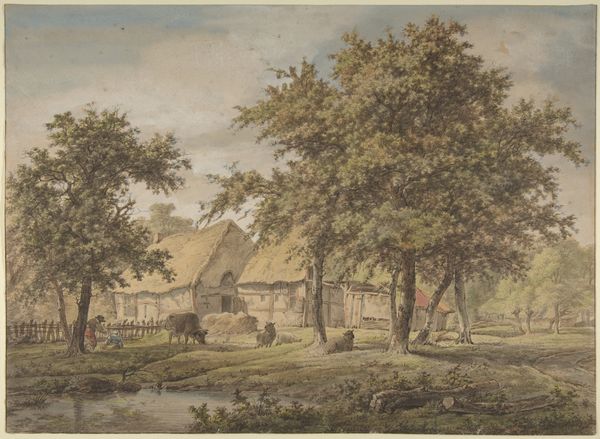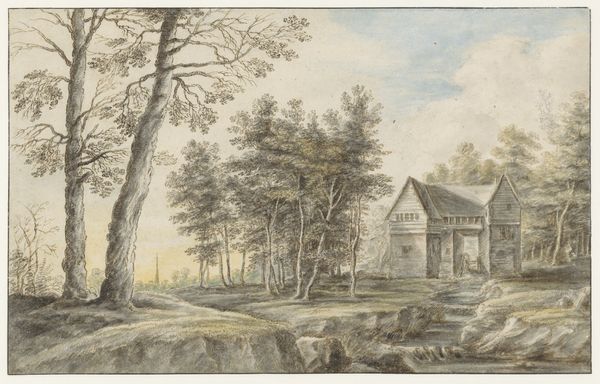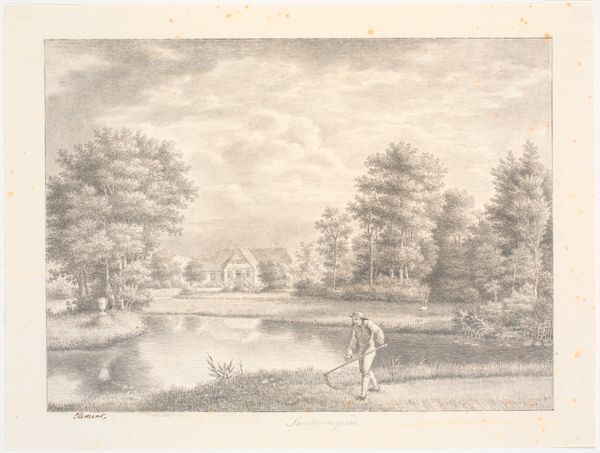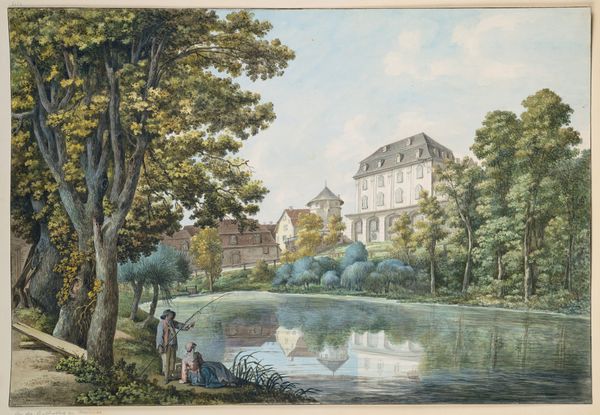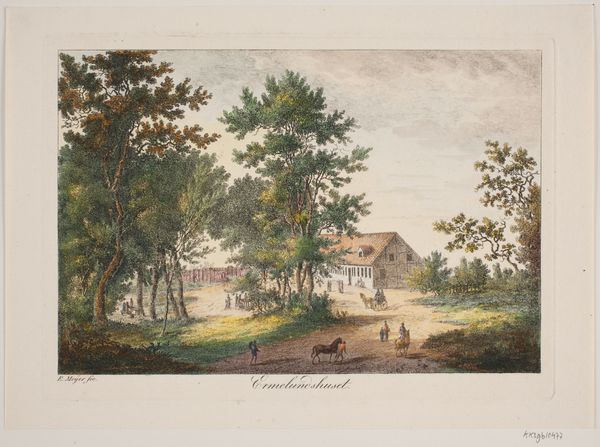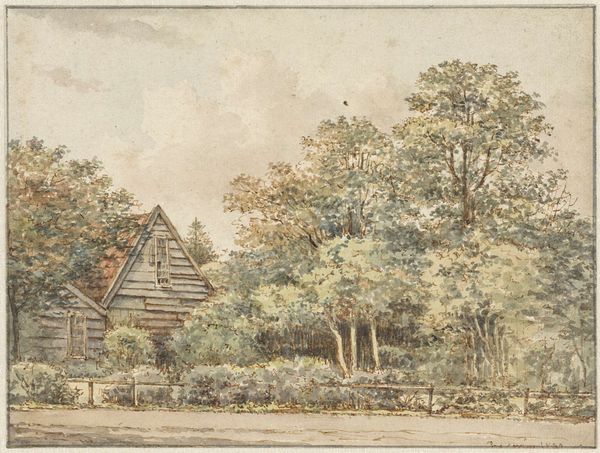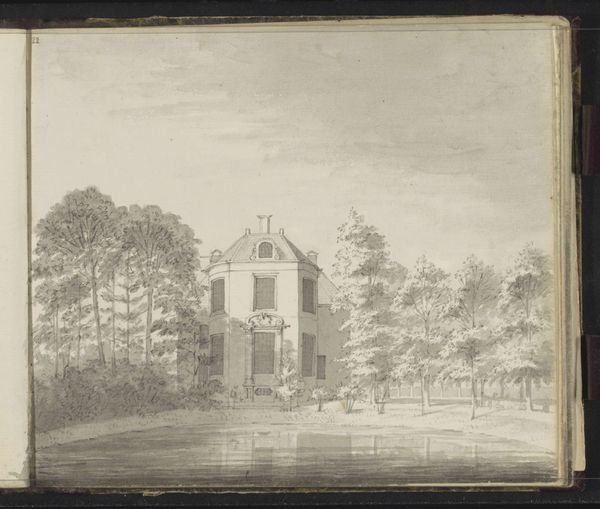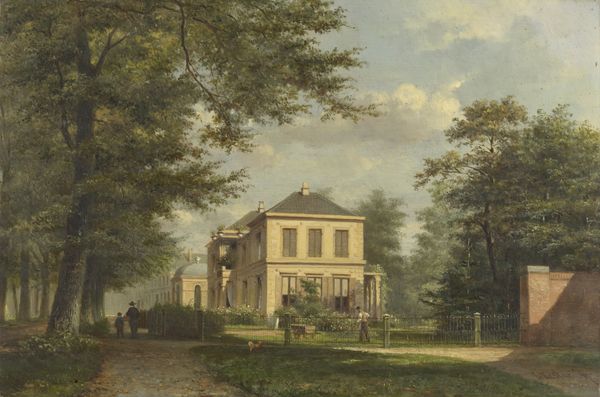
aquatint, painting, print, plein-air
#
aquatint
#
painting
# print
#
plein-air
#
landscape
#
romanticism
Dimensions: 189 mm (height) x 151 mm (width) (bladmaal), 154 mm (height) x 116 mm (width) (billedmaal)
Curator: Looking at J.F. Clemens' "Sanderumgaard", made between 1748 and 1831, it is a quintessentially Romantic vision of landscape as both idyll and projection of social status. What is your immediate reaction? Editor: It evokes a sense of placid comfort. I notice first how the reflection on the water creates a sense of doubled, mirrored reality; how was this achieved? Curator: The work employs aquatint, so it is a print; this one has the added touch of color. The artist is documenting an estate, framing it through very controlled picturesque conventions. The family appears small, as though incidental, on their leisurely boating on the lake. How is labor reflected in this artwork, and how do you see social status? Editor: Yes, the leisure class at ease and removed from visible labor are certainly being presented. It begs the question, what kind of labor went into creating not just the artwork itself, but the idealized vision being presented? Who benefits? There are many possible relationships between land and labor embedded in that scene. Curator: It is worth mentioning, Clemens produced several landscape images; here, he’s playing into both the tradition of plein-air painting and a very deliberately curated construction of the landed gentry in Denmark. How would the local population have experienced this idealized view of the Sanderumgaard estate and the power structures inherent within? This piece and its perspective create both aesthetic pleasure and political distancing. Editor: Agreed; the estate itself would require upkeep by servants. Its very being depended on them and other lower members of the classes, not unlike how this art piece requires ink, paper, a press, et cetera, whose social contexts influence its very image. That being said, there's undeniable skill on display; the application of color, for example, creates depth that belies the two-dimensional surface. Curator: Absolutely, Clemens expertly employs light to evoke serenity, a key tenet of Romanticism. Editor: Understanding this art requires attention to the material realities as much as the theoretical ideals they present, reminding us how all forms of labor leave their trace, both visible and invisible. Curator: And interrogating the idyllic through a political and theoretical lens deepens our viewing experience.
Comments
No comments
Be the first to comment and join the conversation on the ultimate creative platform.
